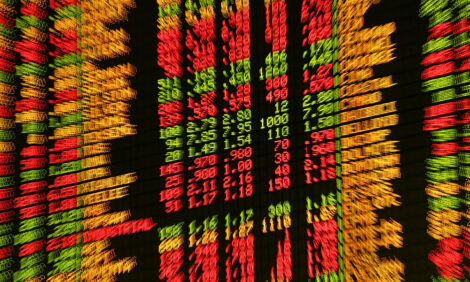



Aviagen Broiler Economics. Bear Market part 1: Feed
Part of Series:
Next Article in Series >
A robust bull market in grain, and indeed in many different commodities, started in August of 2020. Over the next several months the price of corn doubled and soybean meal rose 50%. In May of this year, prices probably reached their peak. Barring a Midwest drought, which appears increasingly unlikely, the highest prices are now in the rear-view mirror and grain prices will continue to moderate.
If May was indeed the top of the market, a bear market mood is starting to settle in. Buyers become less anxious about buying and sellers are more anxious to sell. That appears to be the situation in grain at this moment.
Although COVID-19 still casts a dark shadow over economic activity, economic expansion is real. World economic growth is estimated to be 5.6% this year compared to estimates of just 4% a few months ago. Prospects are looking brighter for the world chicken industry as well.
There are still many things that still could go wrong in the chicken industry. The Delta strain of COVID is a setback that could affect the world economic recovery; grain prices could go higher if there is a last-minute drought in the US; and the recent outbreak of avian influenza in Asia and Europe could return with greater impact next fall.
Despite those challenges, the recessionary effects on the world economy of the pandemic should diminish as more people become vaccinated. It now appears that the economic recession and recovery will be an odd shaped “W”. The downturn last year was followed by a large percentage increase this year when compared to last year; the world economic growth rate will then diminish in 2022 as the easy comparisons end and finally take off in 2023.

The demand for animal protein is normally diminished during periods of economic recession since meat is a luxury for most of the world’s population. In the case of this recession, the negative effects on protein demand were somewhat mitigated by massive efforts by many governments to prop up consumer income. As a result, the meat recession was milder than would have been expected and demand is strengthening in many countries.
The poultry industry was well positioned to ride out this crisis. In a recession there is a shift in demand from more expensive meats toward poultry. In addition, the recent slow expansion of poultry production last year because of the COVID recession brought about a chicken shortage this year in the face of renewed demand with a resulting increase in the price of chicken.
Corn
After a peak in May, the price of corn moved down and then sideways. Ending stock is low for this year and next. Last crop year, 2019-2020, ended with an inventory in the US of 1.9 billion bushels. This crop year, 2020-2021, ending inventory will be only 1.1 billion bushels. A big part of the reason for that drop was the sudden increase in exports to China. For next year, ending stock is projected to only rise slightly to 1.2 billion bushels which is a bullish number. However, other numbers indicate moderation in prices. Most importantly, world-ending stock numbers are ample and are expected to rise next crop year. In addition, there are no grave issues in the rest of the world that would indicate a resurgent bull market. Exports from Argentina and Brazil are steady and while imports by China will be high next crop year, they are projected to be no higher than this crop year.


For the bull market to come back, new news will be required. Barring a drought, there does not appear to be any important new bullish news. As can be seen on the WASDE report, US corn exports are expected to moderate next crop year while feed numbers are steady to falling and the crop is expected to be higher than last year. Farm prices are notably expected to rise in the next crop year. This is not because the peak price is yet to come but rather that the average over the next crop year is likely to exceed the average over this crop year. In addition, the USDA projection for average farm price may prove to be too high. The average price in crop year 2022-2023 is highly likely to return to lower levels.

Soybeans
As with corn, a big part of the reason for higher prices was increased exports to China to feed a growing hog population returning after African Swine Fever. That one-time increase is over and soybean meal prices are down from their peak levels earlier this year. The fall in prices was helped by high soybean oil prices and by good crops in the southern hemisphere. When soybean oil prices are high, meal tends to drop as more soybeans are crushed for the oil. In addition, Brazil and Argentina produce far more soybeans than the US so a good crop in the southern hemisphere ensures that there is a limit to how high soybean prices can rise. This crop year, Argentina and Brazil produced a combined 183 million metric tons (MMT) compared to 112 MMT produced by the US. For the next crop year Argentina and Brazil are expected to produce 196 MMT. More importantly, exports from the two countries are expected to rise from 131 MMT to 146 MMT (+15 MMT) next crop year.

Although the US does not dominate world soybean production, low ending stock numbers in the US have raised concern. Ending stock will fall to the bare minimum of pipeline levels at the end of this month (the end of the crop year) and hardly recover next year. Meanwhile, world ending stock is relatively high and stable. The average price of soybean meal this crop year is $100 higher than last crop year. However, unlike corn, the average price next crop year is not expected to rise but rather remain at current levels. Finally, in 2022-2023, prices are expected to fall to more normal levels.














